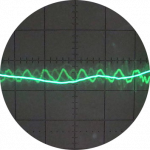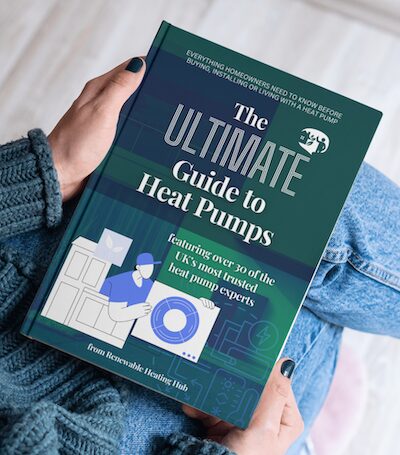SCOP and seasonal variations
Does anyone have a rough ready reckoner for the seasonal differences within SCOP. How different are the seasonal variations. For example if an ASHP has a SCOP at x flow temp of 3.0. What (roughly) would be the COP in say Dec/Jan compared to Jun/Jul?How wide is the variation?
My reason for asking is that I am energy rich in summer. However in Dec/Jan I import electricity at night - but I currently fully use my battery capacity during the day. Any additional electricity usage will be at day rate or peak rate. So in that sense the Dec/Jan COP is more important than SCOP. (albeit I may make a biiger saving through exports in summer)
[Thanks for all the comments on the other thread - really helpful.]
I’m in a similar situation to you regarding energy production, but the seasonal difference in SCOP would vary greatly between houses and locations.
Well insulated houses would fair better as would houses like mine on the coast. Our OAT rarely drops below zero. For what it’s worth my COP might vary from 3.4-4.2 over the heating season.
House-2 bed partial stone bungalow, 5kW Samsung Gen 6 ASHP (Self install)
6.9 kWp of PV
5kWh DC coupled battery
Blog: https://thegreeningofrosecottage.weebly.com/
Heatpump Stats: http://heatpumpmonitor.org/system/view?id=60
@bontwoody Insulation shouldn't have an impact on SCOP as a metric? Surely it is just about raising a temperature from x to y? (poorly insulated will need a higher flow temp or maintenance of running for a longer time?). Location would matter because, as you suggest living next to the sea (in UK) would have a smaller variation between summer and winter than in the mountains. Seasonally adjusted COP seeks to take that differentiation into account, providing a comparitive measurement? The UK is not that sufficiently different that you cannot notionally have an effective winter COP and summer COP with the SCOP somewhere in the middle. Or am I missing something and talking rubbish!?
I have 8.2kw of PV and a 11.6kwh battery against a daily usage of 9.8 - imported at night.
Improved insulation will have an impact on both COP and SCOP, since reducing the thermal energy demand should improve the efficiency.
The simple fact that a heat pump uses a certain quantity of electrical energy to harvest a larger quantity of thermal energy from the ambient air, means that the harder it has to work to meet the heating demand, the lower the efficiency is likely to be.
You may find the following link of use.
@graeme I think the variation might be more than you might think. As you say location is an obvious factor but perhaps 'degree days' could be used to control that in a study. As Derek points out COP varies with flow temperature and different installations will have different flow temperatures. The Internal air temperature will also dictate the how fast heat is lost in partnership with the insulation level.
You could look at the different installations on http://heatpumpmonitor.org/, which might also give you a feel for what you are looking for.
House-2 bed partial stone bungalow, 5kW Samsung Gen 6 ASHP (Self install)
6.9 kWp of PV
5kWh DC coupled battery
Blog: https://thegreeningofrosecottage.weebly.com/
Heatpump Stats: http://heatpumpmonitor.org/system/view?id=60
@derek-m - that's my undertanding - COP and SCOP is a measure of the efficiency of the ASHP not the house. (though there are also distinct issues re the efficiency of the house).
I have three (import) electricity prices with - 14.38 (night), compared to 33.56(peak), respectively requiring SCOPs of 2.41 (night), or 5.63 (peak) to break even. However, the actual COP achievable at night or in winter will be poorer than the stated SCOP.
I am guessing that my actual cost will be higher in winter, but significantly lower in summer...
Posted by: @graemeDoes anyone have a rough ready reckoner for the seasonal differences within SCOP. How different are the seasonal variations. For example if an ASHP has a SCOP at x flow temp of 3.0. What (roughly) would be the COP in say Dec/Jan compared to Jun/Jul?How wide is the variation?
My reason for asking is that I am energy rich in summer. However in Dec/Jan I import electricity at night - but I currently fully use my battery capacity during the day. Any additional electricity usage will be at day rate or peak rate. So in that sense the Dec/Jan COP is more important than SCOP. (albeit I may make a biiger saving through exports in summer)
[Thanks for all the comments on the other thread - really helpful.]
Having just read your original post I feel there is need for clarification.
If my understanding is correct, SCOP is the 'seasonal' coefficient of performance measured over a full year, so may vary year to year, but not within the specified year. So you would not have a Winter SCOP value and a Summer SCOP value. To obtain the actual SCOP value for any given system it would be necessary to measure the thermal energy output over a year, the electrical energy input over the same year, and then divide the output by the input.
As you have stated, the SCOP value will be somewhere between the Winter COP value and the Summer COP value. The actual measured SCOP will probably vary from year to year as operating conditions and weather conditions change.
The SCOP value quoted by different manufacturers should have been obtained from independent testing at an accredited testing facility, under specified testing criteria. The testing is performed under ideal conditions, so will no doubt provide a SCOP value which would be very difficult to obtain on a system within the real world. It nevertheless should allow like for like comparison between different equipment from different manufacturers.
Posted by: @graeme@derek-m - that's my undertanding - COP and SCOP is a measure of the efficiency of the ASHP not the house. (though there are also distinct issues re the efficiency of the house).
I have three (import) electricity prices with - 14.38 (night), compared to 33.56(peak), respectively requiring SCOPs of 2.41 (night), or 5.63 (peak) to break even. However, the actual COP achievable at night or in winter will be poorer than the stated SCOP.
I am guessing that my actual cost will be higher in winter, but significantly lower in summer...
Don't confuse SCOP with COP.
You are indeed correct your costs will be much higher in Winter than in Summer, not just because you are using more electrical energy.
The major electrical energy consumption of a heat pump is to drive the compressor. In colder weather conditions the heat loss from a home is higher, so the heating system must supply more thermal energy to balance this heat loss.
For the heat emitters to actual 'emit' this additional thermal energy into the home, the Leaving Water Temperature (LWT) from the heat pump must be higher. To produce a higher LWT the compressor must work harder and therefore consume more electrical energy.
At the same time the main source of thermal energy, the outside air, is colder, and therefore contains less accessible thermal energy, which means that the compressor has to work even harder to meet the heating demand.
The actual COP can reduce quite rapidly as the outside air temperature falls towards, and below, 0C.
Improved insulation and larger heat emitters allows heat pumps to operate at lower LWT, which in turn helps to improve efficiency since the compressor may not have to work so hard.
Running a heat pump during the colder periods of the day will be less efficient than during the warmer periods.
Don't confuse SCOP with COP.
The only difference is that one is seasonally adjusted?
Improved insulation and larger heat emitters allows heat pumps to operate at lower LWT, which in turn helps to improve efficiency since the compressor may not have to work so hard.
True but SCOP and COP is measured at specific LWT and the metrics are usually given for different LWTs? So my question wasnt related to insulation or heat emitters. But rather to a "model" house and the variation within COP at different times of the day and season. Which then has a more complex relationship with the price of electricity - where that pricing is dynamic?
Quite some time ago I created an Excel Modeling Tool with which it is possible to approximate the operating parameters of a heat pump under varying operating conditions.
The major factors which affect the efficiency of a heat pump are the Indoor Air Temperature (IAT), the Outside Air Temperature (OAT), the calculated heat loss of the home, the specified output capacity of the heat emitters and the manufacturer's operating parameters for the heat pump in question.
The actual heat loss can vary throughout the day and is primarily dependent upon the difference between IAT and OAT, but solar gain, wind chill, rain effect and human activity can also cause quite large variations in actual heat loss. Most nights it is likely that heat loss will be higher because OAT is lower and there will be no solar gain and reduced human activity, so a heat pump would need to work harder at a lower COP.
To maintain a constant IAT under the above conditions would therefore likely use more electrical energy, though the cost per unit may be lower. Some heat pump owners reduce the desired IAT during nighttime hours, which they may find beneficial and cost effective.
A heat pump is probably most efficient during the mid to late afternoon when OAT is likely to be highest.
I feel certain that you are aware, lower cost electricity tariffs don't often align with the most efficient operating conditions. As far as I am aware there is no simple formula concerning heat pump efficiency, other than if it is colder outside the heat pump will likely use more electrical energy at a lower COP.
Thanks for the detailed reponse
Some heat pump owners reduce the desired IAT during nighttime hours, which they may find beneficial and cost effective.
By implication - do most heat pump users maintain the same IAT during the night and daytime when not at home? I understand that the response time for a heat pump to heat a room is slower, but surely...
- 26 Forums
- 2,342 Topics
- 53 K Posts
- 444 Online
- 6,000 Members
Join Us!
Worth Watching
Latest Posts
-
RE: Poll for Time of Use, tariffs, technology
I ticked Intelligent and Agile, I'm on Agile at the mom...
By JohnnyB , 4 hours ago
-
RE: Has Anyone Else Noticed a Decline in Tradesmanship?
I am coming towards the end of a new house build (why I...
By JohnnyB , 4 hours ago
-

RE: What a Bad Heat Pump Installation Looks Like
@editor The trick to an inside unit installation is to ...
By MikeFl , 7 hours ago
-
RE: Different dT on each radiator?
The way heating systems are designed will result in rou...
By JamesPa , 10 hours ago
-
RE: Heat Pump Performance Analysis Web App using Modbus Data
I have created a beginners guide to provide a walkthrou...
By redzer_irl , 14 hours ago
-

RE: Setback savings - fact or fiction?
PS by visually merging the two tables as above, I ended...
By cathodeRay , 19 hours ago
-
RE: Samsung ASHP scheduling help
Correction to the post above (my time to edit has run o...
By redzer_irl , 20 hours ago
-

RE: Homely for Daikin Altherma 3 - Petersfield Area
@russ If you would care to pose your questions on one o...
By Toodles , 21 hours ago
-

RE: A Smarter Smart Controller from Homely?
@papahuhu I have a feeling that my Homely smart control...
By Toodles , 22 hours ago
-

RE: The good, the bad and the not that great – my heat pump installation
@cathoderay the guy I spoke to on the phone seemed very...
By Burtis , 1 day ago
-
RE: Configuration issues with 10kW Midea R32 heat pump
Sorry that was a screenshot of @curlyKatie - mine has...
By SteveT , 1 day ago
-
RE: British Gas vs Octopus Energy vs Heat Geek vs EDF vs Aira vs OVO vs EON.Next vs Boxt
I get the impression that that comment "they don't comm...
By JamesPa , 2 days ago
-

@majordennisbloodnok Just in case there are variations ...
By Toodles , 2 days ago
-

RE: Latest NIBE model has known defect and no solution
@kings I’m glad I could help. NIBE are taking this very...
By Mars , 2 days ago
-
RE: Octopus Cosy Heat Pump Owners & Discussion Thread
@jamespa yes, I'm under no illusions but in some respec...
By AndrewJ , 2 days ago
-
RE: Electricity price predictions
It seems the end of cfd payments is in sight, even if a...
By Batpred , 2 days ago
-
-
@pie_eater Yes, I installed Homely to a Daikin heat pum...
By gery , 2 days ago
-
RE: Havenwise App Help & Forum Support – Get the Most from Your Heat Pump
@davidalgarve Potentially stupid question, but are you ...
By Sheriff Fatman , 3 days ago





